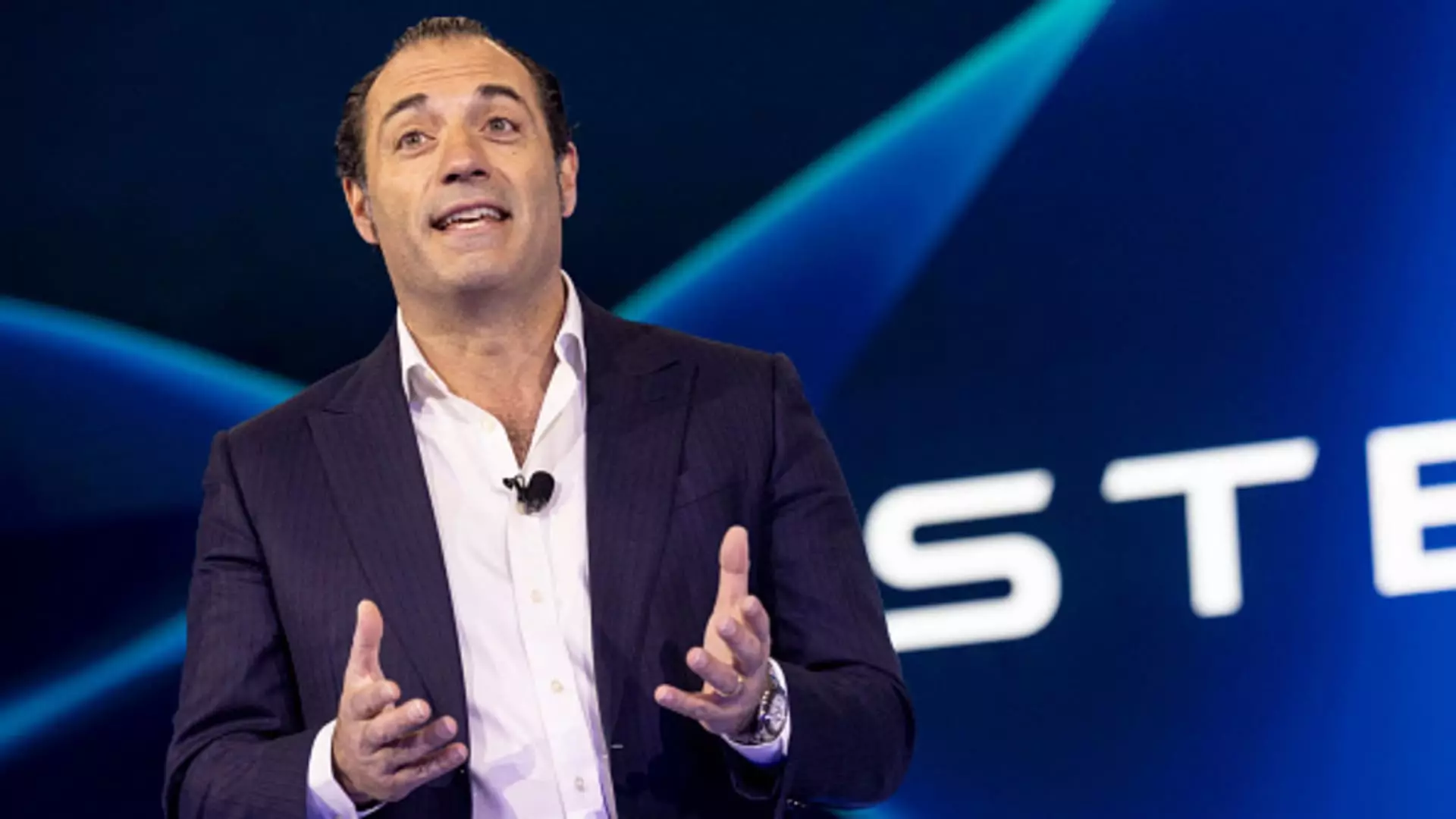The automotive landscape is undergoing seismic shifts, and Stellantis—and its newly appointed CEO, Antonio Filosa—stands at the crossroads of innovation and tradition. The appointment comes after a tumultuous period marked by Carlos Tavares’ unexpected resignation. While Tavares led Stellantis with a grand vision, the company recently grappled with plummeting profits and dwindling U.S. sales. Filosa’s ascendance, therefore, is not merely about assuming a title; it’s about navigating a minefield of challenges that could either solidify or threaten the conglomerate’s future.
Restoring Lost Trust
One of Filosa’s critical mandates will be to reinforce relationships across the board. Under Tavares, Stellantis suffered from rifts between the company and its key partners—dealers, suppliers, and unions especially in America, which is crucial for any automotive business. The need for trust and collaboration should be at the forefront of Filosa’s strategy. He has expressed a desire to “strengthen the bonds and trust” with his associates, which echoes the traditional values of loyalty and kinship inherent in the automotive culture.
However, trust cannot be mended through statements alone. Filosa’s past experience as Jeep CEO uniquely positions him to understand the intricacies of this fragile dynamic, but words must be paired with action. Dealer Michael Bettenhausen succinctly highlights this sentiment by stressing the “heavy lifting” that lies ahead. The confidence of industry stakeholders rests delicately on how effectively Filosa can integrate their feedback into actionable outcomes.
Navigating Financial Volatility
As Stellantis contends with a 14% decline in year-on-year revenues and retracted financial guidance, Filosa’s knack for financial acuity will be tested. The specter of political unpredictability—particularly surrounding trade policies—looms large over the automotive industry, impacting supply chains and operational costs. The new CEO needs to articulate a clear vision for financial recovery while addressing investors’ anxiety about the fiscal health of the company.
Filosa’s appointment comes at a time when confidence in traditional auto manufacturing is waning, hence any misstep could result in further erosion of stakeholder trust. Unlike Tavares, who may have favored a more aggressive portfolio restructuring, Filosa’s approach will require a delicate balance that accommodates both internal combustion vehicles and the burgeoning electric vehicle (EV) market. He needs to adopt a dual approach: enhancing the profitability of current offerings while aggressively investing in technological innovation.
Steering Through the EV Integration Challenge
With electrification becoming non-negotiable for car manufacturers globally, Filosa faces the pressing issue of integrating electric vehicles into Stellantis’ portfolio. This challenge is compounded by the ever-growing sentiments among consumers towards sustainability. The push for electric solutions is not merely a trend; it’s critical for brand image and consumer trust—as vital as providing new and reliable product lines.
To navigate this complex integration, Filosa will need to revitalize product development processes while ensuring that Stellantis can pivot effectively to meet consumer demand without sacrificing profitability. This endeavor is not just a corporate necessity; it’s a moral and ethical obligation to foster a sustainable future. The challenge is steep, but Filosa’s leadership approach must reflect an alignment with these contemporary consumer values.
Implementing a Cohesive Strategy Amidst Global Pressures
As a global entity, Stellantis faces international pressures that require astute maneuvering. Filosa’s travel to various plants signifies an understanding that a unified approach is crucial across all regions, especially with the varied demands of local markets. Filosa must embrace a strategy that champions local involvement while maintaining a global operational focus.
This might mean weighing the merits of local production against cost-efficiency driven by global supply chains—a balancing act that could alienate or empower various stakeholders. Filosa’s deep-rooted familiarity with the company could position him well to tackle these complexities, but global economic conditions require a level of adaptability often not exhibited in giant corporations.
Anticipating Market Dynamics
In a rapidly evolving automotive industry, where competitors are racing towards autonomous solutions and enhanced mobility, tomorrow’s success hinges on today’s strategic foresight. Filosa’s understanding of market dynamics positions him to predict shifts rather than simply react to them.
He needs to tap into the emerging trends and amplify Stellantis’ focus on data-driven decisions that can lead to innovations in product offerings, supply chain management, and consumer engagement. The future is not merely about creating great vehicles—it’s about reshaping the entire experience surrounding vehicle ownership.
Tony Filosa’s inaugural leadership phase will reflect innovation balanced with tradition. Whether he can unite the fragmented relationships within Stellantis and steer the company into a prosperous, electric future rests not just in his capabilities, but also in his vision for an industry at the brink of transformation.

